Most innovative companies for 08/20/2024 (new inventions)
Exciting new inventions from Qualcomm Incorporated, Samsung Electronics Co., Ltd., Apple Inc. And Lg Electronics Inc.
This is a weekly article summarizing a handful of inventions from the most innovative companies in the world. The summaries are created by an A. I. and proof-read by a human before publication. Attempts are made to ensure accuracy of the descriptions, but it is very much a work in progress. Each invention description is preceeded by a poem about the invention that is written by the A. I. I have found the limerick is actually quite good at explaining the invention in simple terms. Enjoy!
****
"Revolutionizing Farming: New Hydraulic Hay Bale Fork Assembly Boosts Efficiency and Versatility!"
What is this invention?
Hay bale fork assembly
In the fields where the tractor does roam,
With a fork and some tines making hay their home,
Hydraulic might lifts,
As it deftly sifts,
Bales of gold in a bounty to comb.

In a recent patent filing, an innovative hay bale fork assembly promises to transform the way farmers handle bales on their tractors. This new design allows for an efficient lifting mechanism equipped with hydraulic cylinders that extend the functionality of familiar farming equipment. The assembly features a pair of mounting brackets, one on each side of the tractor, that can pivot to lift or lower a set of tines. The unique arrangement accommodates the penetration of two hay bales at once, streamlining the loading and unloading process. Compared to traditional bale forks, which typically require manual adjustment or offer limited capacity, this invention could make handling heavy loads far less strenuous. Competitors like John Deere and New Holland currently dominate the market with their hydraulic lifting solutions, but this patent suggests an evolution in ease of use and efficiency that could catch their attention. Imagine a farmer using this technology to quickly stack bales for storage or efficiently load them onto transport trucks without the back-breaking labor usually involved. The time saved in optimizing these tasks could lead to increased productivity, especially during the busy harvest season. While the concept is exciting, the transition from a patent to a commercially available product is often fraught with challenges. Manufacturers must navigate production costs, market demand, and the practicality of integrating such systems with existing tractor models. As we ponder the potential impact of this invention, one is left to wonder: in an age where efficiency is more critical than ever, how much are farmers willing to invest in technology that promises to make their work easier? Share your thoughts in the comments below!
Abstract
A hay bale fork assembly includes a pair of hydraulic cylinders that is each connected to a rear end of a tractor. A pair of mounting brackets is each pivotally coupled to a respective first lateral side and a second lateral side of the tractor having each of the mounting brackets extending away from the rear end of the tractor. Each of the mounting brackets is pivotally attached to a respective one of the hydraulic cylinders for urging the mounting brackets between a lifted position and a lowered position. A lifting fork is coupled between each of the mounting brackets. The lifting fork has a first tine that is disposed on the lifting fork to penetrate a first hay bale. The lifting fork has a pair of second tines each being disposed on the lifting fork to penetrate a second hay bale. A hay bale fork assembly includes a pair of hydraulic cylinders that is each connected to a rear end of a tractor. A pair of mounting brackets is each pivotally coupled to a respective first lateral side and a second lateral side of the tractor having each of the mounting brackets extending away from the rear end of the tractor. Each of the mounting brackets is pivotally attached to a respective one of the hydraulic cylinders for urging the mounting brackets between a lifted position and a lowered position. A lifting fork is coupled between each of the mounting brackets. The lifting fork has a first tine that is disposed on the lifting fork to penetrate a first hay bale. The lifting fork has a pair of second tines each being disposed on the lifting fork to penetrate a second hay bale.
US Patent 12063893
****
"Revolutionizing Game Scoring: Innovative Camera System Captures and Models Antler Metrics with Precision"
What is this invention?
Multiscopic whitetail scoring game camera systems and methods
With drones soaring high, catching game,
In 3D they measure each antler's fame.
A system so grand,
With cameras at hand,
Bringing scores that will surely proclaim!

A recently published patent unveils an intriguing camera system specifically designed for scoring the antlers of game animals. This innovative setup leverages multiple cameras to create detailed 3-D models from 2-D images, aiming to provide a precise measurement of antler structures based on established scoring systems. Imagine being able to evaluate trophy deer from the comfort of your home, or using drones to scan vast hunting grounds to identify potential game without disturbing their natural habitat. The applications for this technology could extend beyond mere scoring; it could revolutionize wildlife management and conservation efforts by providing valuable data on animal populations and health. However, the market for such products is not without competition. Companies like Tactacam and others already offer advanced camera systems tailored for hunters, though they primarily focus on simple video recording rather than 3-D modeling. This new camera system could carve out a niche for itself in the realm of serious hunters and wildlife enthusiasts who prioritize accuracy in scoring, but the real test will be its viability in the market. Could this technology change the dynamics of wildlife scoring, or will it remain a novelty in a market that already has established products? What do you think? Share your thoughts in the comments below.
Abstract
A game scoring camera system is disclosed for capturing images of game animals for the purpose of scoring the antlers using an accepted scoring method. One or more cameras are used in a multiscopic arrangement for capturing two-dimensional (2-D) images which are then converted to three-dimensional (3-D) data models, the resulting 3-D data models being used for determining measurements of various antler structures for calculating a score for the set of antlers captured in the images, the score being based on existing antler scoring systems. Some embodiments include one or more cameras, each being mounted on an unmanned aerial vehicle or drone, for capturing images during an aerial survey of game animals located within a particular area. Other embodiments include at least two cameras mounted in a stationary configuration for capturing images of game animals located within a particular area. A game scoring camera system is disclosed for capturing images of game animals for the purpose of scoring the antlers using an accepted scoring method. One or more cameras are used in a multiscopic arrangement for capturing two-dimensional (2-D) images which are then converted to three-dimensional (3-D) data models, the resulting 3-D data models being used for determining measurements of various antler structures for calculating a score for the set of antlers captured in the images, the score being based on existing antler scoring systems. Some embodiments include one or more cameras, each being mounted on an unmanned aerial vehicle or drone, for capturing images during an aerial survey of game animals located within a particular area. Other embodiments include at least two cameras mounted in a stationary configuration for capturing images of game animals located within a particular area.
US Patent 12063911
****
"Revolutionizing Aquatics: New Smart Aquarium Combines Stunning Visuals with Interactive Multimedia Display!"
What is this invention?
Aquarium with a digital display
In a cuboid tank watertight,
A screen glows with colors so bright,
With clamps snug and tight,
And multimedia’s delight,
Aquarium tech shines with pure light!
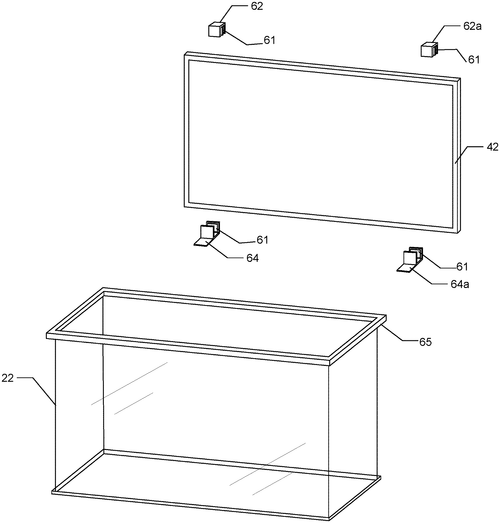
Imagine an aquarium that doesn't just house fish, but also provides a dynamic visual experience. A recent patent describes an innovative aquarium design featuring a removable digital display on its back. This screen could showcase various multimedia elements, like underwater scenes, educational content about marine life, or even interactive visuals that respond to the movements of the fish. With the ability to connect wirelessly to devices, users could easily change what’s displayed with just a few taps on their phones. Currently, competitors like Fluval and Tetra provide stylish aquariums but lack this interactive element that could engage aquarists and casual observers alike. The potential applications for this new design are broad—imagine an aquarium in a classroom that not only houses fish but also serves as an interactive learning tool, or a breathtaking living art piece in a hip restaurant that adapts its visuals to the mood of the evening. However, the practicality of turning this concept into a commercial product is still in question. Will the complexity of maintaining a water-tight setup alongside a digital screen deter consumers? Or will the novelty and engagement it provides be enough to draw buyers in? As we explore this intersection of nature and technology, we invite you to ponder—what would you want displayed on your aquarium screen? Share your thoughts in the comments below!
Abstract
An aquarium with a digital display including a fish tank assembly, a screen assembly and a fastening assembly. Container assembly has a cuboid shape with a top opening and has a watertight seal. The container is configured to hold water. Screen assembly includes a digital display removably attached to a rear side of the container, wherein the digital display is capable of projecting elements of multimedia. Digital display is further configured to be operatively connected to a wireless device, thereby the digital display is actuated by means of the wireless device. Fastening assembly includes top clamps and bottom clamps, wherein are configured to attach the digital display to the rear side of the container by means of adjustable apertures of the top clamps and bottom clamps. An aquarium with a digital display including a fish tank assembly, a screen assembly and a fastening assembly. Container assembly has a cuboid shape with a top opening and has a watertight seal. The container is configured to hold water. Screen assembly includes a digital display removably attached to a rear side of the container, wherein the digital display is capable of projecting elements of multimedia. Digital display is further configured to be operatively connected to a wireless device, thereby the digital display is actuated by means of the wireless device. Fastening assembly includes top clamps and bottom clamps, wherein are configured to attach the digital display to the rear side of the container by means of adjustable apertures of the top clamps and bottom clamps.
US Patent 12063912
****
"Breakthrough Genetic Modification Enhances Olfactory Sense in Vertebrates!"
What is this invention?
DNA sequence that increases odorant receptor representation in the olfactory system
In labs where the scientists play,
They modify genes in a way,
With DNA bright,
They boost sense and sight,
Creating a critter anew each day!

In a striking development in the realm of biotechnology, researchers have unveiled a genetically modified creature with an enhanced ability to detect smells, spurred by an advanced alteration in its genetic makeup. This innovation stands apart in a competitive field that includes products like enhanced scent detection dogs and sophisticated electronic noses designed to identify various substances based on odor. The genetically modified vertebrate boasts an impressive increase in its odorant receptor presence, thanks to a carefully selected sequence of DNA. Such a modification could revolutionize fields ranging from environmental monitoring — where detecting subtle changes in odors could signal the detection of pollutants — to safety and security applications, potentially improving the scent tracking capabilities for search and rescue teams. Imagine a world where pets or specially bred animals can be used for detecting diseases like cancer or monitoring the quality of air in our neighborhoods, far beyond what current technology offers. While the ethical concerns and practical limitations of such a genetically engineered creature remain to be fully explored, the prospect is tantalizing. As this breakthrough unfolds, we’re left to ponder: Could such developments trigger a new wave of bioengineering that makes our existing tools and methods feel outdated, or will the complexities of bringing this type of invention to market hold it back? What do you think?
Abstract
A genetically modified vertebrate is provided that has an enhanced sense due to an over representation of a predetermined odorant receptor. The vertebrate is genetically modified by introduction of DNA that comprises at least four sequential repeats of a sequence whose primary structure is at least 90% homologous with ACATAACTTTTTAATGAGTCT (SEQ ID NO: 1). The DNA causes a nearby odorant receptor coding sequence to be over represented in a singular gene choice fashion relative to a corresponding vertebrate that lacks the DNA. A genetically modified vertebrate is provided that has an enhanced sense due to an over representation of a predetermined odorant receptor. The vertebrate is genetically modified by introduction of DNA that comprises at least four sequential repeats of a sequence whose primary structure is at least 90% homologous with ACATAACTTTTTAATGAGTCT (SEQ ID NO: 1). The DNA causes a nearby odorant receptor coding sequence to be over represented in a singular gene choice fashion relative to a corresponding vertebrate that lacks the DNA.
US Patent 12063914
****
"Revolutionary Rotating Fishing Lure Promises to Hook More Fish with Innovative Arm Design!"
What is this invention?
Fishing lure with pivoting arm
A lure with a head and a hook,
Has an arm that gives fish quite a look.
It spins round with grace,
In the water’s cool space,
As it dances and tugs on the brook.
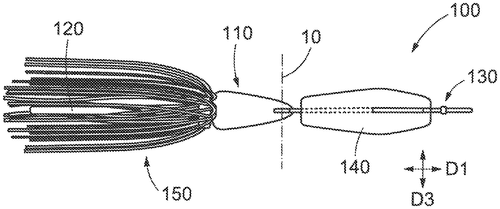
In a world where every angler is searching for the perfect catch, a new patent has emerged that promises to bring a fresh twist to traditional fishing lures. This innovative design features a head with a hook, but the real game changer is the rotatable arm that swings a blade into action. Positioned cleverly within the lure itself, this arm creates a dynamic movement pattern as it rotates, enhancing its appeal underwater. Compared to established products like the wobbly spoons of Swedish Pimple or the more modern vibrating lures from brands like Rapala, this new lure's added rotational element could attract more fish by mimicking the erratic movements of prey. Imagine casting your line with a lure that doesn't just float aimlessly but instead dances in the water, potentially drawing in curious fish. Potential uses for this innovation could extend beyond simple fishing expeditions. Outdoor sporting events, fishing tournaments, or even educational programs teaching youth about local aquatic life might benefit from a lure that showcases enhanced realism. However, as exciting as this patent sounds, it’s still unclear whether this design will transition from blueprint to market. The fishing industry is notoriously crowded, with new products frequently emerging, yet standing out remains a challenge. Will this new lure find its place among avid anglers, or will it fade into obscurity like many promising ideas before it? What do you think? Would you try out a fishing lure with this rotating blade feature? Share your thoughts in the comments below!
Abstract
A fishing lure comprises a head; a hook connected to the head; an arm rotatably connected to the head with the lateral direction of the head as a rotation axis, the rotation axis located inside the head; and a blade connected to the arm. The rotation locus formed when the arm is rotated may be included in a plane with the lateral direction of the head as perpendicular line. The arm may be restricted from moving in the lateral direction of the head. A fishing lure comprises a head; a hook connected to the head; an arm rotatably connected to the head with the lateral direction of the head as a rotation axis, the rotation axis located inside the head; and a blade connected to the arm. The rotation locus formed when the arm is rotated may be included in a plane with the lateral direction of the head as perpendicular line. The arm may be restricted from moving in the lateral direction of the head.
US Patent 12063917
QUALCOMM Incorporated
"Qualcomm Unveils Game-Changing Location Tracking Patent: Precision Measurement Device Location Done Smarter!"
What is this invention?
Increased positioning resolution
In a server's bright glow, signals align,
First and second, they dance in a line.
With commands sent with care,
A location laid bare,
Data streams forth, by design.
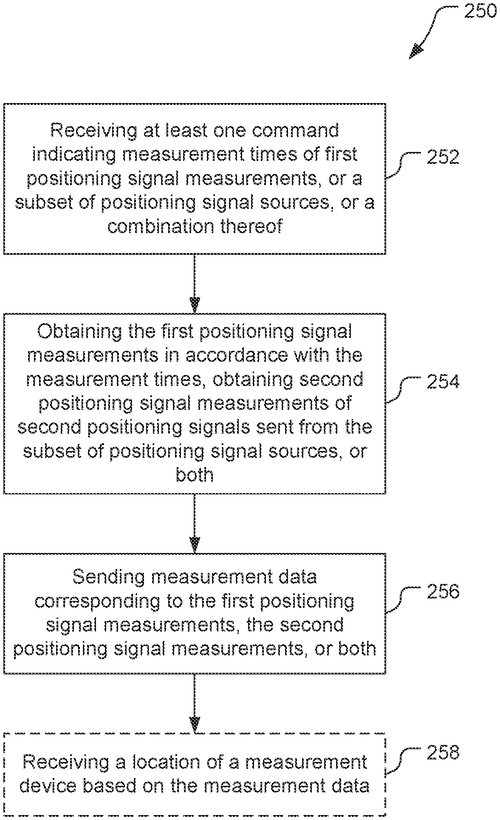
Qualcomm has recently filed a patent that outlines an intriguing method for pinpointing the location of a measurement device with precision. The core of this system revolves around a server that orchestrates timing and measurement commands for gathering positioning signals from various sources. This brings an exciting new layer to location tracking technology, which could have meaningful applications in fields such as logistics, autonomous vehicles, and even personal fitness tracking. While companies like Apple and Google have made strides with their own location services, Qualcomm's approach may carve out a niche by enhancing accuracy and responsiveness through its server-driven model. Imagine a delivery truck that can not only plot its route in real time but also communicate back to a central hub for dynamic rerouting based on traffic or other conditions. Or consider how fitness enthusiasts might benefit from more precise tracking of their performance metrics during a workout, all while minimizing battery drain on their devices. However, as promising as these advancements sound, the leap from patent to product often involves numerous hurdles. It raises the question of whether this technology can be integrated into existing devices or if it will require new hardware altogether. Additionally, consumers might wonder about the availability, cost, and privacy implications of such tracking systems. As we await more details, one can't help but wonder: how comfortable are you with companies knowing your precise location, especially when it could lead to improved services? Share your thoughts in the comments.
Abstract
A method of determining a location of a measurement device includes determining, at a server: measurement times of first positioning signal measurements, of first positioning signals from first positioning signal sources and/or a subset of positioning signal sources of second positioning signal sources. The method includes sending at least one measurement command from the server to the measurement device to cause the measurement device to obtain the first positioning signal measurements in accordance with the measurement times and/or obtain second positioning signal measurements of second positioning signals sent from the subset of positioning signal sources. The method includes: receiving, at the server from the measurement device, measurement data corresponding to the first positioning signal measurements and/or the second positioning signal measurements; and determining, at the server, the location of the measurement device based on the measurement data. A method of determining a location of a measurement device includes determining, at a server: measurement times of first positioning signal measurements, of first positioning signals from first positioning signal sources and/or a subset of positioning signal sources of second positioning signal sources. The method includes sending at least one measurement command from the server to the measurement device to cause the measurement device to obtain the first positioning signal measurements in accordance with the measurement times and/or obtain second positioning signal measurements of second positioning signals sent from the subset of positioning signal sources. The method includes: receiving, at the server from the measurement device, measurement data corresponding to the first positioning signal measurements and/or the second positioning signal measurements; and determining, at the server, the location of the measurement device based on the measurement data.
US Patent 12066559
QUALCOMM Incorporated
"QUALCOMM Unveils Revolutionary GPU Patent: Dynamic Shader Execution for Enhanced Graphics Performance!"
What is this invention?
Run-time mechanism for optimal shader
In a GPU's realm, instructions flow,
For graphics to shine, with a vibrant glow.
With shaders at play,
They choose day by day,
Which memory holds data, high or low.
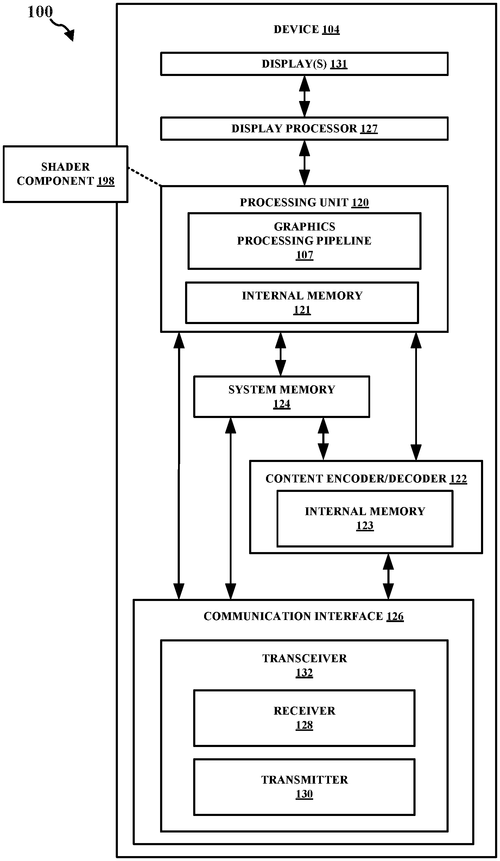
In the fast-evolving landscape of graphics processing, Qualcomm has filed a patent that hints at a new direction for GPUs. This technology focuses on optimizing how graphical workloads are managed, specifically through a dynamic approach to processing. Instead of following a one-size-fits-all method, this system appears designed to adapt based on the specific needs of each task. By assessing run-time parameters, it smartly selects between two different shader programs, determining where to store data—either in system memory or constant memory—based on size requirements. Competitors like NVIDIA and AMD currently dominate this space with their advanced graphics cards that excel at demanding tasks such as gaming, video editing, and 3D modeling. While Qualcomm's innovation seeks to enhance efficiency, the question remains: will it be able to penetrate the robust market already served by these giants? If implemented successfully, Qualcomm's technology could lead to smoother graphics rendering and faster processing, opening doors for applications beyond gaming, such as virtual reality and real-time graphical simulations. Imagine a world where graphics-heavy applications run effortlessly on devices we typically wouldn't associate with high-performance graphics, such as smartphones or tablets. It’s an enticing vision, but it all hinges on Qualcomm’s ability to translate this idea into a market-ready product. As advancements in graphics technology continue to unfold, how do you think this new approach will change the way we interact with our devices? Share your thoughts in the comments below!
Abstract
Aspects presented herein relate to methods and devices for graphics processing including an apparatus, e.g., a GPU. The apparatus may receive a set of draw call instructions corresponding to a graphics workload, where the set of draw call instructions is associated with at least one run-time parameter. The apparatus may also obtain a first shader program associated with storing data in a system memory and at least one second shader program associated with storing data in a constant memory. Further, the apparatus may execute the first shader program or the at least one second shader program based on whether the at least one run-time parameter is less than or equal to a size of the constant memory. The apparatus may also update or maintain a configuration of a shader processor or a streaming processor based on executing the first shader program or the at least one second shader program. Aspects presented herein relate to methods and devices for graphics processing including an apparatus, e.g., a GPU. The apparatus may receive a set of draw call instructions corresponding to a graphics workload, where the set of draw call instructions is associated with at least one run-time parameter. The apparatus may also obtain a first shader program associated with storing data in a system memory and at least one second shader program associated with storing data in a constant memory. Further, the apparatus may execute the first shader program or the at least one second shader program based on whether the at least one run-time parameter is less than or equal to a size of the constant memory. The apparatus may also update or maintain a configuration of a shader processor or a streaming processor based on executing the first shader program or the at least one second shader program.
US Patent 12067666
QUALCOMM Incorporated
"Qualcomm Unveils Groundbreaking MOM Capacitor Technology: A Leap Forward in High-Efficiency Energy Storage!"
What is this invention?
Back-end-of-line (BEOL) high resistance (Hi-R) conductor layer in a metal oxide metal (MOM) capacitor
In circuits where fingers align,
A MOM cap's design is divine.
With layers that stack,
And polarities whack,
Its function is truly sublime!
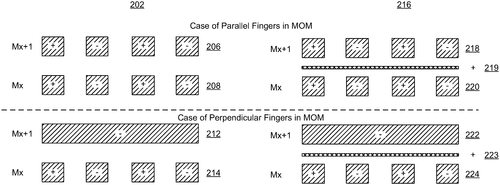
In a recent patent filing, Qualcomm has ventured into the exciting realm of capacitor technology with their innovative metal oxide metal (MOM) capacitor design. While the technical details can be a bit dense, the overarching concept presents potential implications that could shake up various electronics markets. The MOM capacitor introduces a design that comprises a layered metal structure, emphasizing a configuration that aims to enhance efficiency and performance. This approach sets it apart from existing products like the tantalum and ceramic capacitors commonly found in everything from smartphones to electric vehicles. With mobile devices becoming ever more power-hungry, the demand for advanced energy storage solutions is higher than ever. Qualcomm's MOM capacitor could theoretically provide improvements in size and performance, making devices lighter and more efficient. Beyond mobile phones, envision how this technology might also find its way into other applications, such as renewable energy systems, where lightweight and high-capacity solutions are critical. Manufacturers of electric vehicles may also take notice, as enhanced capacitor designs can lead to better battery management systems, extending driving ranges and optimizing charging times. While enthusiasm for Qualcomm’s leap into this territory is warranted, we must ask: Is this innovation significant enough to disrupt the current market landscape dominated by giants like Murata and Vishay, or will it remain a patented concept without real-world application? We’d love to hear your thoughts in the comments below!
Abstract
A metal oxide metal (MOM) capacitor and methods for fabricating the same are disclosed. The MOM capacitor includes a first metal layer having a first plurality of fingers, each of the first plurality of fingers configured to have alternating polarities. A high resistance (Hi-R) conductor layer is disposed adjacent the first metal layer in a plane parallel to the first metal layer. A metal oxide metal (MOM) capacitor and methods for fabricating the same are disclosed. The MOM capacitor includes a first metal layer having a first plurality of fingers, each of the first plurality of fingers configured to have alternating polarities. A high resistance (Hi-R) conductor layer is disposed adjacent the first metal layer in a plane parallel to the first metal layer.
US Patent 12068238
QUALCOMM Incorporated
"Qualcomm's Groundbreaking Radio Frequency Phase Shifter Redefines Signal Modulation with Precision Control!"
What is this invention?
Radio frequency phase shifter with variable input capacitance
In the realm of waves where signals play,
A phase shifter dances, brightening the day.
With amplifiers keen,
And modulation unseen,
It smooths out the frequencies, come what may!
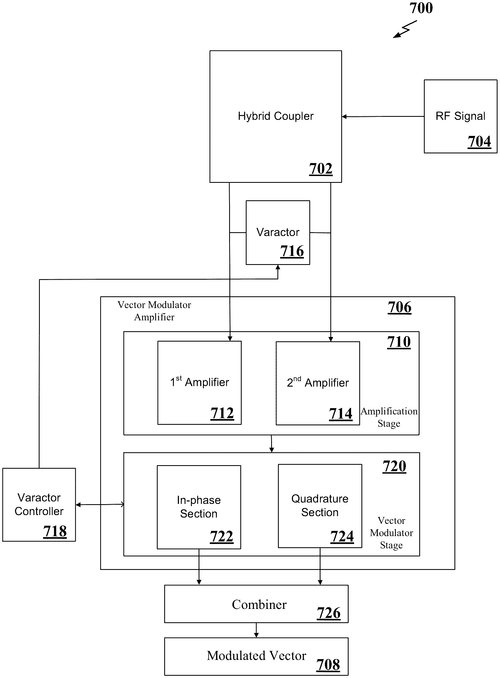
In an exciting development for wireless technology, Qualcomm has submitted a patent for a radio frequency phase shifter that could redefine how the industry handles signal modulation. At the heart of this innovation is an amplification stage designed to enhance voltage signals before they are fine-tuned for transmission. This mechanism involves two amplifiers working in tandem with a hybrid coupler, which may provide a more efficient way of managing radio frequencies. This invention promises to offer a new level of control over phase modulation, thanks to its sophisticated vector modulation stage that separates the processing into two distinct sections for better management of signals. The inclusion of a varactor—a component that adjusts capacitance—further enhances the flexibility of this system, potentially allowing for faster adjustments to signal phase and power. Qualcomm’s offering enters a competitive arena already populated by other companies focused on similar technologies. For instance, companies like Analog Devices and Texas Instruments have their own phase shifters that are used in various applications, from telecommunications to radar systems. Qualcomm's twist seems to promise a more refined approach that could lead to improvements in wireless communications and possibly even consumer electronics, paving the way for more robust 5G networks or even novel applications in satellite communications. Imagine using this new technology in everyday devices—perhaps smartphones that can maintain stronger connections in crowded places or smart home devices that can adapt their signals dynamically based on location and interference. The possibilities could enhance not only consumer gadgets but also critical infrastructure in smart cities. With such significant potential benefits on the horizon, one must wonder: Will this innovation be ready for mass production before it meets the same fate as many great ideas that hobble in the realm of patents? What uses do you think a technology like this could have in your life? Let us know in the comments below!
Abstract
Aspects of the disclosure relate to a radio frequency phase shifter. An example includes an amplification stage to produce an amplified voltage, the amplification stage having a first amplifier with a first input coupled to a first output of a hybrid coupler and a second amplifier with a complementary second input coupled to a complementary second output of the hybrid coupler. A vector modulation stage coupled to the amplification stage receives the amplified voltage and produces a modulated vector, the vector modulation stage has an in-phase section and a quadrature section to control the phase of the modulated vector in response to a phase control signal. A varactor coupled across the first input and the second input of the amplification stage adjusts the capacitance between the first input and the second input in response to a capacitance control signal. Aspects of the disclosure relate to a radio frequency phase shifter. An example includes an amplification stage to produce an amplified voltage, the amplification stage having a first amplifier with a first input coupled to a first output of a hybrid coupler and a second amplifier with a complementary second input coupled to a complementary second output of the hybrid coupler. A vector modulation stage coupled to the amplification stage receives the amplified voltage and produces a modulated vector, the vector modulation stage has an in-phase section and a quadrature section to control the phase of the modulated vector in response to a phase control signal. A varactor coupled across the first input and the second input of the amplification stage adjusts the capacitance between the first input and the second input in response to a capacitance control signal.
US Patent 12068724
QUALCOMM Incorporated
"QUALCOMM's New Patent Revolutionizes 5G Communication with Dynamic Frequency Hopping in Virtual Bandwidth Parts!"
What is this invention?
Frequency hopping within a virtual bandwidth part
In a realm where frequencies play,
A UE hops in a clever ballet,
From narrow to wide,
With a swift, subtle glide,
In a virtual BWP, they sway!
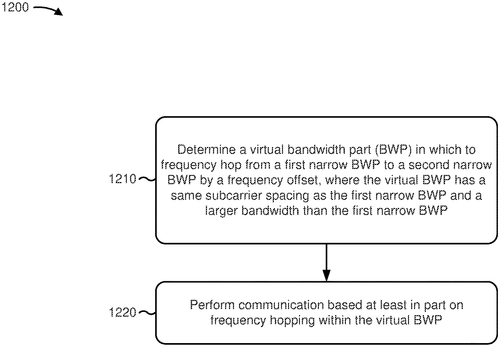
Qualcomm has recently filed a patent that hints at a promising advancement in wireless communication technology, particularly concerning how devices connect to networks. This new concept revolves around adjusting frequencies within a designated range, allowing devices to swiftly switch between smaller channels. Current offerings from companies like Ericsson and Nokia have focused heavily on improving signal reliability and expanding coverage. This innovative approach from Qualcomm could enhance these existing technologies by enabling devices to seamlessly transition between different channels, possibly leading to more stable connections and better overall performance. Imagine a scenario where your smartphone maintains a crystal-clear video call even while switching between cellular bands or Wi-Fi networks, reducing drops and glitches. The possibilities for smoother data transmission are exciting. But will this concept move beyond the patent stage into practical application? Qualcomm’s history of leading breakthroughs gives reason to hope, but the competitive landscape is fierce. Other companies are not sitting idle, constantly refining their own strategies to improve wireless communications. As we ponder the potential impact of this technology, it's worth considering: how important is uninterrupted connectivity to you in your daily life? Share your thoughts in the comments below!
Abstract
Various aspects of the present disclosure generally relate to frequency hopping within a virtual BWP. In some aspects, a UE may determine a virtual bandwidth part (BWP) in which to frequency hop from a first narrow BWP to a second narrow BWP by a frequency offset. The virtual BWP may have a same subcarrier spacing as the first narrow BWP and a larger bandwidth than the first narrow BWP. The UE may perform communication based at least in part on frequency hopping within the virtual BWP. Numerous other aspects are provided. Various aspects of the present disclosure generally relate to frequency hopping within a virtual BWP. In some aspects, a UE may determine a virtual bandwidth part (BWP) in which to frequency hop from a first narrow BWP to a second narrow BWP by a frequency offset. The virtual BWP may have a same subcarrier spacing as the first narrow BWP and a larger bandwidth than the first narrow BWP. The UE may perform communication based at least in part on frequency hopping within the virtual BWP. Numerous other aspects are provided.
US Patent 12068775
Samsung Electronics Co., Ltd.
“Samsung’s Innovative Cleaning Robot Tackles Obstacle-Dodging with Adjustable LiDAR Technology”
What is this invention?
Cleaning robot and control method thereof
There once was a robot so clever,
With sensors that worked like a lever,
It cleaned under chairs,
With height-based repairs,
And made dusty corners a pleasure!
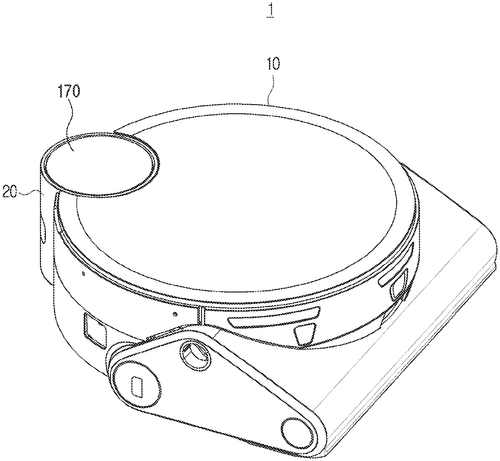
Samsung's latest patent lays the groundwork for a next-generation cleaning robot that aims to tackle the toughest areas in our homes—those forgotten spots hiding under furniture. With this innovative design, the cleaning robot can lower its height to squeeze beneath obstacles, making it an invaluable companion for those hard-to-reach areas that usually gather dust bunnies. The key feature of this robot is its adjustable sensor height, allowing it to map out cleaning routes effectively while navigating around furniture. This is quite a step forward compared to competitors like Roomba and Neato, which have their own navigational systems but can't quite reach the underbelly of lower furniture. The robot also employs multiple sensors to detect obstacles and reduce the chances of getting stuck, which many users often experience with existing models. Imagine the potential for a smart home environment where this robot automatically adapts its cleaning strategy based on the layout of your furniture—a true time-saver for busy families or individuals. Not only could it maintain cleanliness, but it could also provide real-time feedback on where dirt tends to accumulate, offering insights for better home organization. However, as exciting as these advancements appear, it remains to be seen whether Samsung can bring this concept to life on the market or if it will join the vault of abandoned prototypes. Will the technology be refined into a consumer-friendly product? Or will it fall victim to the same fate as many other ambitious prototypes? What features would you like to see included in a cleaning robot designed for those tricky spots in your home? Let us know in the comments below!
Abstract
A cleaning robot capable of entering a region under an obstacle and cleaning by reducing a height of a LiDAR sensor, and a control method thereof are provided. The cleaning robot includes a main body, a driving device, a cleaning device, a LiDAR sensor and configured to be raisable and lowerable between a first position and a second position having different heights, a bumper sensor configured to detect a collision between the LiDAR sensor and an obstacle, an obstacle sensor configured to obtain information on an obstacle, and a processor configured to generate a cleaning map based on an output of the LiDAR sensor and an output of the obstacle sensor, and control the sensor driver to adjust a height of the LiDAR sensor based on at least one of the cleaning map, an output of the bumper sensor, or the output of the obstacle sensor. A cleaning robot capable of entering a region under an obstacle and cleaning by reducing a height of a LiDAR sensor, and a control method thereof are provided. The cleaning robot includes a main body, a driving device, a cleaning device, a LiDAR sensor and configured to be raisable and lowerable between a first position and a second position having different heights, a bumper sensor configured to detect a collision between the LiDAR sensor and an obstacle, an obstacle sensor configured to obtain information on an obstacle, and a processor configured to generate a cleaning map based on an output of the LiDAR sensor and an output of the obstacle sensor, and control the sensor driver to adjust a height of the LiDAR sensor based on at least one of the cleaning map, an output of the bumper sensor, or the output of the obstacle sensor.
US Patent 12064080
Samsung Electronics Co., Ltd.
"Samsung's Innovative Cleaning Robot Uses Lidar Technology for Smarter Docking Solutions!"
What is this invention?
Cleaning robot and controlling method thereof
In a home where the floors gleam so bright,
A robot cleans day and night,
With Lidar in tow,
And light’s wonderful glow,
It docks like a star, what a sight!
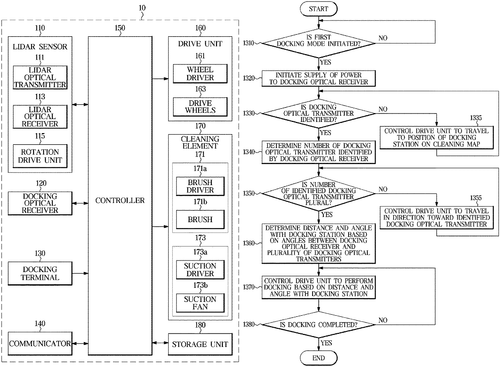
Samsung's latest patent for a cleaning robot showcases an intriguing approach to docking that could elevate the user experience in robotic vacuums. Leveraging light detection, this new robot is designed to recognize signals emitted from its docking station, allowing for more precise and reliable docking than some current competitors like the Roomba and Ecovacs. What sets this innovation apart is the use of a Lidar sensor, which can detect and interpret light patterns in real-time. This technology should theoretically enable the cleaning robot to navigate and position itself without the trial and error that we often see in today's market. For households that require seamless integration and minimal intervention, this could be particularly beneficial, making the robot's return to its charging station almost effortless. Moreover, as smart home tech becomes more interconnected, this kind of advanced docking could extend beyond simple cleaning tasks. Imagine a future where your cleaning robot accurately senses other smart devices within your home, optimizing its cleaning route based on the activities occurring around it. While this patent points to exciting possibilities, the question remains: will Samsung turn this technology into a tangible product that can compete with existing models? Or is this yet another intellectual exercise in a field quickly evolving past individual brand capabilities? What features would you like to see in the next generation of cleaning robots? Let us know your thoughts in the comments below!
Abstract
A cleaning robot and a method of controlling the same, the cleaning robot performing docking by detecting light emitted from a docking station using a Lidar sensor or a light receiving element separately provided on a printed circuit board (PCB) of the Lidar sensor, and performing docking based on the number of light emitting elements of the docking station identified according to the detected light are provided. The cleaning robot includes a main body, a drive unit configured to move the main body, a Lidar sensor including a Lidar optical transmitter, a Lidar optical receiver, and the PCB to which the Lidar optical transmitter and the Lidar optical receiver are fixed and provided to be rotatable, a docking optical receiver fixed to the PCB and configured to receive light emitted from the docking optical transmitter of the docking station, and at least one processor is configured to control the drive unit to be docked on the docking station based on light received by the docking optical receiver. A cleaning robot and a method of controlling the same, the cleaning robot performing docking by detecting light emitted from a docking station using a Lidar sensor or a light receiving element separately provided on a printed circuit board (PCB) of the Lidar sensor, and performing docking based on the number of light emitting elements of the docking station identified according to the detected light are provided. The cleaning robot includes a main body, a drive unit configured to move the main body, a Lidar sensor including a Lidar optical transmitter, a Lidar optical receiver, and the PCB to which the Lidar optical transmitter and the Lidar optical receiver are fixed and provided to be rotatable, a docking optical receiver fixed to the PCB and configured to receive light emitted from the docking optical transmitter of the docking station, and at least one processor is configured to control the drive unit to be docked on the docking station based on light received by the docking optical receiver.
US Patent 12064082
Samsung Electronics Co., Ltd.
"Samsung Patents Groundbreaking Infrared Sensor Design: A New Age of Heat Detection Technology!"
What is this invention?
Sensor configured to sense heat or infrared light and electronic device including same
In a substrate, the sensors do dwell,
With recesses where heat waves compel.
A layer reflective,
In cavities protective,
With electrodes that happily tell.
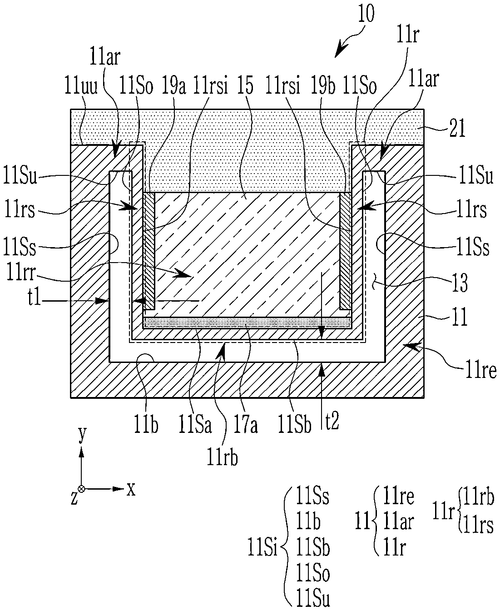
Samsung has recently filed a patent for an innovative sensor capable of detecting heat or infrared light. This new technology features a unique substrate with a series of recesses and a cavity designed to enhance its sensitivity. With higher efficiency in monitoring temperature variations, this sensor could find applications in various fields, from smart home devices that adjust settings based on temperature readings to advanced security systems that detect potential intruders by sensing heat signatures. Currently, companies like FLIR Systems and Seek Thermal dominate the thermal imaging market. However, Samsung's approach could give it a competitive edge, especially if integrated into their existing ecosystem of smart devices or even into home appliances to enhance energy efficiency. The potential uses of this technology are wide-ranging, particularly in the realms of healthcare for monitoring body temperatures or even in automotive applications where heat detection can improve safety and maintenance. Imagine a future where your phone can not only take pictures but also help you monitor your health by detecting changes in body temperature. As we await possible developments from Samsung, one question lingers: How do you imagine this technology could change your everyday life? Let us know in the comments below!
Abstract
A sensor configured to sense heat or infrared light including a substrate includes a plurality of recess portions; a cavity inside the substrate along a bottom surface and opposing side surfaces of the substrate; a lower reflective layer disposed on at least one of an upper surface of the bottom surface of the substrate, a lower surface of the bottom surface of the substrate, and a surface opposite to the lower surface of the bottom surface of the substrate; a first electrode and a second electrode disposed inside both side surfaces of the recess portion and facing each other; a pixel structure configured to sense heat or infrared light inside the recess portion and embedded in the substrate; and a planarization layer covering the entire upper portion of the substrate. A sensor configured to sense heat or infrared light including a substrate includes a plurality of recess portions; a cavity inside the substrate along a bottom surface and opposing side surfaces of the substrate; a lower reflective layer disposed on at least one of an upper surface of the bottom surface of the substrate, a lower surface of the bottom surface of the substrate, and a surface opposite to the lower surface of the bottom surface of the substrate; a first electrode and a second electrode disposed inside both side surfaces of the recess portion and facing each other; a pixel structure configured to sense heat or infrared light inside the recess portion and embedded in the substrate; and a planarization layer covering the entire upper portion of the substrate.
US Patent 12066334
Samsung Electronics Co., Ltd.
"Samsung Unveils Game-Changing Radar Signal Processing Tech: Precision in Every Pulse!"
What is this invention?
Determining relevant gesture signals using multi-dimensional radar signals
In the realm of radar's bright might,
A device makes the signals take flight.
With transceivers in play,
It maps night into day,
Processing beams for insights so right.
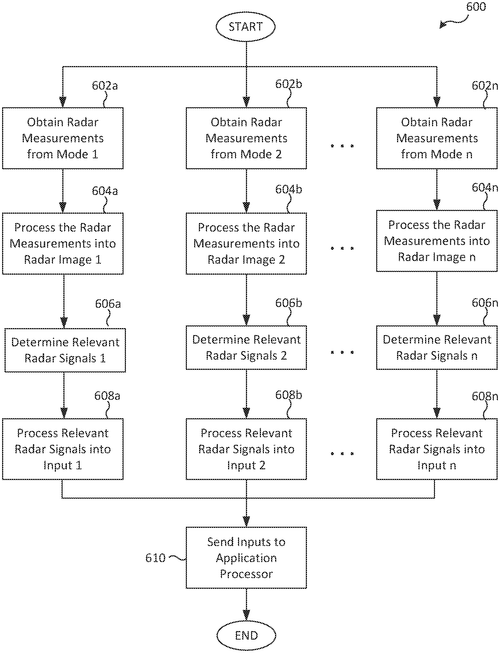
In a promising move to enhance radar technology, Samsung has filed a patent for an innovative method that appears to refine how electronic devices process radar signals. At its core, this system uses a radar transceiver, paired with memory and a processor, to gather and analyze radar measurements. The goal? To identify and isolate the most relevant signals from a variety of radar images, ultimately simplifying the data for specific applications. This concept isn't entirely new in the tech landscape—companies like Google and Apple have made strides with their own radar technologies, primarily for things like gesture recognition in smart devices and enhanced AI capabilities in home automation. However, Samsung’s approach could offer advantages by potentially increasing the efficiency and accuracy of radar signal processing, which could be a game changer in fields such as automotive safety, drone navigation, and even smart home devices that rely on motion detection. Imagine a future where your smart home system can intelligently adjust lighting or temperature based on more accurate readings of your presence, or where vehicles can better detect and respond to obstacles in their path through refined radar imaging. The applications are vast, limited only by innovation and imagination. But as exciting as this technology sounds, we must remember that many patents do not translate to products. Will Samsung be able to turn this concept into a market-ready device that stands out in a competitive field filled with established players? What do you think: could this technology redefine how we interact with our devices, or is it just another patent gathering dust? Share your thoughts below!
Abstract
A method and electronic device for determining relevant signals in radar signal processing. The electronic device includes a radar transceiver, a memory, and a processor. The processor is configured to cause the electronic device to obtain, via the radar transceiver of the electronic device, radar measurements for one or more modes in a set of modes; process the radar measurements to obtain a set of radar images; identify relevant signals in the set of radar images based on signal determination criteria for an application; and perform the application using only the relevant signals. A method and electronic device for determining relevant signals in radar signal processing. The electronic device includes a radar transceiver, a memory, and a processor. The processor is configured to cause the electronic device to obtain, via the radar transceiver of the electronic device, radar measurements for one or more modes in a set of modes; process the radar measurements to obtain a set of radar images; identify relevant signals in the set of radar images based on signal determination criteria for an application; and perform the application using only the relevant signals.
US Patent 12066528
Samsung Electronics Co., Ltd.
"Samsung's Latest Patent Unveils Groundbreaking Technique for Precision Timing and Positioning in User Equipment"
What is this invention?
NR positioning enhancement for timing and angle based methods and resource aggregation
In a world where signals delay,
An Rx TEG finds its way.
With timestamps precise,
And a measurement nice,
It reports where the antennas play.

Samsung has recently unveiled an intriguing patent that focuses on improving the precision of signals received by user devices. The innovation centers on a method that enhances the accuracy of timing measurements by addressing delays that occur when a signal travels from an antenna to a processing unit. Essentially, it allows devices to better pinpoint where and when a signal is received, which could have a multitude of applications. Imagine using this technology in smartphones, wearables, or IoT devices—perhaps enhancing GPS accuracy for navigation apps, ensuring that your location is pinpointed within mere meters rather than tens of meters. It could revolutionize how smart home devices communicate, enabling quicker and more reliable interactions among devices, from your smart thermostat to your doorbell camera. Currently, competitors like Apple and Google have their own technologies aimed at refining signal precision and location tracking, with Apple leveraging their U1 chip in devices for spatial awareness and Google using a combination of GPS and machine learning to improve location services. Samsung’s approach appears to add another layer, which may enhance the reliability of connectivity in an increasingly crowded spectrum of devices. However, while the concept sounds promising, the real challenge lies in implementation. Will Samsung be able to translate this technical proposal into a tangible product that consumers can experience in their daily lives? What potential transformations could this technology trigger in the way we use our devices? As you think about this innovation, we’d like to hear from you: how would you envision using a device that has higher accuracy in signal reception—what specific scenarios come to mind? Let us know in the comments below!
Abstract
A method may include generating a receive timing error group (Rx TEG) based on a time delay of a receive (Rx) signal, wherein the time delay is a time measured from an arrival of the Rx signal at a Rx antenna to a time of the Rx signal being digitized and time-stamped at a baseband processor of a user equipment (UE), determining a timing error group (TEG) index corresponding to the generated Rx TEG, determining a positioning measurement associated with the Rx antenna used to generate the Rx TEG, and reporting the positioning measurement associated with the Rx TEG index. A method may include generating a receive timing error group (Rx TEG) based on a time delay of a receive (Rx) signal, wherein the time delay is a time measured from an arrival of the Rx signal at a Rx antenna to a time of the Rx signal being digitized and time-stamped at a baseband processor of a user equipment (UE), determining a timing error group (TEG) index corresponding to the generated Rx TEG, determining a positioning measurement associated with the Rx antenna used to generate the Rx TEG, and reporting the positioning measurement associated with the Rx TEG index.
US Patent 12066560
SAMSUNG ELECTRONICS CO., LTD.
"Samsung's New Wearable Tech Revolutionizes Heart Health Monitoring with Innovative Pulse Wave Measurement!"
What is this invention?
Apparatus for blood pressure estimation using photoplethysmography and contact pressure
A gadget to check your heartbeat's flow,
With colors of light to make it glow.
It measures the wave,
With pressure it gave,
And tells how your tickers do, you know!
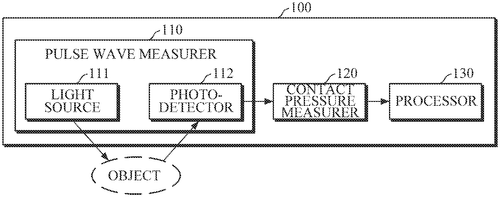
Samsung has recently filed a patent for a promising new device that aims to enhance cardiovascular monitoring. The device features a adaptable strap that can be wrapped around various body parts, making it easy to use for tracking heart health. At its core, the apparatus utilizes a sophisticated mechanism to measure pulse waves through two different wavelengths of light, distinguishing it from existing products like those from Fitbit or Apple, which primarily rely on single-wavelength technology for heart rate monitoring. What sets this device apart is its ability to evaluate different pulse signals and adjust measurements based on the pressure of the strap against the skin. This could lead to more accurate assessments of cardiovascular health than what's currently offered by competitors. Imagine athletes or individuals managing chronic conditions using this tech to fine-tune their workouts or keep a closer eye on their heart function. However, while the potential for this innovation is exciting, it's essential to consider whether it will reach the market. We’ve seen numerous patents that spark imagination but never materialize as consumer products. Given Samsung's resources, this device might evolve further in the research and development phase, but until we see prototypes, it’s hard to gauge how practical and user-friendly the final product will be. As we ponder the possibilities of easy access to deep cardiovascular insights, one question remains: how do you see this technology impacting your daily health routine? Share your thoughts in the comments below.
Abstract
An apparatus for estimating cardiovascular information includes: a main body; and a strap connected to the main body and formed to be flexible to be wrapped around an object, wherein the main body may include: a pulse wave measurer configured to measure, from the subject, a first pulse wave signal by using a first light of a first wavelength, and a second pulse wave signal by using a second light of a second wavelength, the first wavelength being different from the second wavelength; a contact pressure measurer configured to measure a contact pressure between the object and the pulse wave measurer; and a processor configured to extract a cardiovascular characteristic value based on the first pulse wave signal, the second pulse wave signal, and change in the contact pressure, and estimate cardiovascular information based on the extracted cardiovascular characteristic value. An apparatus for estimating cardiovascular information includes: a main body; and a strap connected to the main body and formed to be flexible to be wrapped around an object, wherein the main body may include: a pulse wave measurer configured to measure, from the subject, a first pulse wave signal by using a first light of a first wavelength, and a second pulse wave signal by using a second light of a second wavelength, the first wavelength being different from the second wavelength; a contact pressure measurer configured to measure a contact pressure between the object and the pulse wave measurer; and a processor configured to extract a cardiovascular characteristic value based on the first pulse wave signal, the second pulse wave signal, and change in the contact pressure, and estimate cardiovascular information based on the extracted cardiovascular characteristic value.
US Patent 12064270
SAMSUNG ELECTRONICS CO., LTD.
"Samsung Unveils Revolutionary Photocatalyst Film for Superior Air Purification—Combating VOCs and Viruses with Cutting-Edge Metal Oxides!"
What is this invention?
Photocatalyst for air purification, and ceramic catalyst filter and air purification device including the same
In the quest for pure air we strive,
A catalyst helps us survive.
With metals combined,
And a film well-designed,
To cleanse the air, it’ll thrive and revive!

Samsung has recently patented an intriguing technology aimed at tackling some of the persistent air quality issues we face today. This new air purification system utilizes a specialized photocatalyst designed to break down harmful substances like volatile organic compounds (VOCs) and viruses. While that sounds promising, it’s worth considering how it stacks up against existing products from companies like Dyson and Molekule, both of which have made strong strides in the air purification market. The heart of Samsung's design appears to be a combination of metal oxide particles treated to enhance their effectiveness when exposed to UV light. This could mean that, unlike some current air purifiers that merely filter pollutants, Samsung's approach might chemically break down harmful substances, potentially providing a deeper clean for indoor environments. Potential applications for this technology are vast. Beyond just at-home purification devices, we could see it being integrated into HVAC systems in offices, schools, or public transport to help ensure cleaner air in shared spaces. Imagine a future where not only your device, but also building materials could incorporate this photocatalyst to contribute to a healthier environment. But as exciting as this sounds, tangible products from patents can often be years away, sometimes never hitting the market at all. The challenge lies in manufacturing, scalability, and consumer acceptance. Could this patent lead to a game-changing product, or will it remain an innovation waiting in the wings? What do you think the next step should be for Samsung in bringing this technology to consumers? Let us know in the comments.
Abstract
A photocatalyst for air purification, a photocatalyst film including the photocatalyst, and an air purification device including the photocatalyst. The photocatalyst for air purification includes: a first metal oxide particle having ultraviolet absorptivity, and fluorine bound to a surface of the first metal oxide particle; second metal oxide particles present on the surface of the first metal oxide particle. The use of the photocatalyst for air purification to remove or degrade volatile organic compounds (VOCs) and viruses. A photocatalyst for air purification, a photocatalyst film including the photocatalyst, and an air purification device including the photocatalyst. The photocatalyst for air purification includes: a first metal oxide particle having ultraviolet absorptivity, and fluorine bound to a surface of the first metal oxide particle; second metal oxide particles present on the surface of the first metal oxide particle. The use of the photocatalyst for air purification to remove or degrade volatile organic compounds (VOCs) and viruses.
US Patent 12064536
SAMSUNG ELECTRONICS CO., LTD.
"Samsung's Innovative Detachable Refrigerator Door: A New Era of Customization and Convenience!"
What is this invention?
Refrigerator and home appliance
In a fridge with a door that's quite clever,
Its panels can change up in a sever.
With a cap and a fix,
It’s easy to mix,
Modular magic, as cool as the ever!
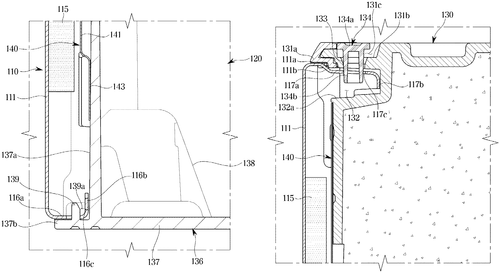
Samsung has filed an intriguing patent for a refrigerator design that focuses on flexibility and customization. At its core, this idea presents a refrigerator door with interchangeable panels that can be mounted and removed based on user preferences. Imagine being able to switch out your refrigerator door's appearance to match your kitchen décor or seasonal themes; it’s an exciting prospect for homeowners looking to refresh their space. In an era where smart home devices and integrated technology have become the norm, Samsung’s innovation goes beyond functionality to tap into personal aesthetics. While competitors like LG and Whirlpool offer smart refrigerators with advanced cooling systems and Wi-Fi connectivity, Samsung appears to be leaning into an aspect of personalization that could resonate well with consumers. Potential applications for this customizable door could extend beyond mere aesthetics. For instance, panels could feature designs that promote family bonding, such as a chalkboard for notes or a display area for kids’ artwork. Alternatively, panels could be made with advanced materials that offer better insulation or cleaning properties, enhancing the kitchen's overall utility. However, while the creative possibilities are appealing, the practical implementation of this concept remains in question. Will consumers really embrace the need for customizable refrigerator doors, or will it be seen as a gimmick? As we ponder Samsung's vision, we invite you to share your thoughts below: Would you consider swapping out refrigerator doors, or do you prefer a more conventional approach?
Abstract
A refrigerator including a main body having a storage room, and a door to open and close the storage room, wherein the door includes a door body and a door panel detachably mountable on the door body. The door panel may be installed on the door body by coupling a lower fixing portion with a lower cap protrusion, accommodating an upper fixing portion in an accommodating space through a panel passing portion, and accommodating a fixing cover in the accommodating space through a cover passing portion to be coupled with the upper fixing portion. A refrigerator including a main body having a storage room, and a door to open and close the storage room, wherein the door includes a door body and a door panel detachably mountable on the door body. The door panel may be installed on the door body by coupling a lower fixing portion with a lower cap protrusion, accommodating an upper fixing portion in an accommodating space through a panel passing portion, and accommodating a fixing cover in the accommodating space through a cover passing portion to be coupled with the upper fixing portion.
US Patent 12066238
SAMSUNG ELECTRONICS CO., LTD.
"Samsung Unveils Revolutionary Color Filter Array with Mie Resonance Particles to Enhance Light Manipulation!"
What is this invention?
Color filter array having color filters, and image sensor and display device including the color filter array
In a filter array, colors play,
With Mie particles guiding the way.
When light beams do dance,
Through layers they prance,
Creating a spectrum that stays!
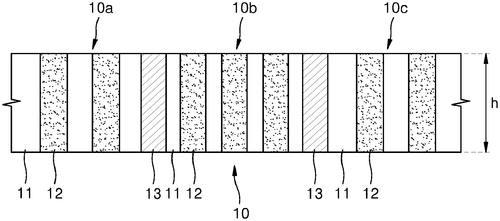
Samsung has recently filed a patent that hints at a potential game-changer in the field of color filtering. This innovative technology proposes a unique arrangement of color filters that work together to selectively allow various wavelengths of light to pass through. It utilizes specific particles that create unique optical effects, encased in a transparent material, which could enhance the way we perceive color and image quality. While we’ve seen similar technologies from competitors like Apple and LG, who have made strides in improving display quality with their own filtering methods, Samsung's approach could take things to a whole new level. This advancement might not only bolster the vibrant screens of future smartphones and televisions but also find applications in camera technology, enhancing color representation in photography and video production. Imagine vivid landscapes that look even more lifelike or smartphone displays that adjust color and brightness with greater precision based on the environment. This technology could also revolutionize virtual and augmented reality experiences, immersing users in richer, more detailed worlds. However, as thrilling as this innovation sounds, there remains a question of practicality. Will Samsung turn this patented technology into tangible products that can seamlessly integrate into our daily lives? What potential uses do you envision for this new color filter technology, and how do you think it might change your experience with screens and imaging devices? Share your thoughts in the comments below!
Abstract
A color filter array may include a plurality of color filters arranged two-dimensionally and configured to allow light of different wavelengths to pass therethrough. Each of the plurality of color filters includes at least one Mie resonance particle and a transparent dielectric surrounding the at least one Mie resonance particle. A color filter array may include a plurality of color filters arranged two-dimensionally and configured to allow light of different wavelengths to pass therethrough. Each of the plurality of color filters includes at least one Mie resonance particle and a transparent dielectric surrounding the at least one Mie resonance particle.
US Patent 12066323
Apple Inc.
"Apple's Innovative Concentric Optical Sensing Patent Promises Enhanced Detection and Precision in Future Devices"
What is this invention?
Concentric architecture for optical sensing
In devices where light intertwines,
With detectors in circles like vines,
An emitter shines bright,
In the center of light,
While layers discern spectral designs.
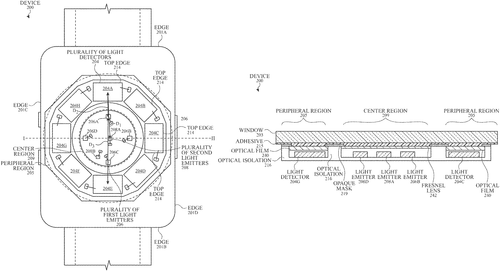
Apple Inc. has recently filed a patent that reveals an intriguing concept for an electronic device designed around a unique optical sensing arrangement. This technology features light detectors and emitters set up in a concentric pattern, where emitters sit at the center, creating an efficient method for capturing and processing light. This configuration could allow for more precise data collection, including improvements in image capture and sensor accuracy, making it particularly useful in applications like augmented reality, facial recognition, or even smart home devices. While companies like Google and Microsoft have made strides in similar technologies—especially with their AR solutions—Apple’s concentric design suggests a potential edge in how perceptively the device could understand its surroundings. The presence of a specialized transparent layer that can differentiate between various wavelengths of light could mean better filtering of unnecessary information, leading to clearer insights for the device's operation. Imagine a future where your smart glasses not only identify faces, but also enhance your vision based on lighting conditions, or smart homes that automatically adjust settings based on environmental data gathered from their surroundings. The possibilities are vast, but as always, we must consider the practical aspects of bringing such innovations to market. As we look toward this technology's future, one burning question arises: how much technological sophistication can consumers handle before it becomes overwhelming? Share your thoughts in the comments below.
Abstract
An electronic device including optical sensing with a concentric architecture and methods for operation thereof is disclosed. The concentric architecture can include light detector(s) arranged in a concentric manner around light emitter(s). In some examples, at least one light emitter can be located in the center of the device, and each light detector can be located the same separation distance from the light emitter. Each light detector can be arranged such that the separation distance from the centrally located light emitter can be greater than the separation distance from another light emitter. Examples of the disclosure further include a selective transparent layer overlaying the light detector(s). The selective transparent layer can include section(s) transparent to a first wavelength range and non-transparent to a second wavelength ranges. In some examples, the selective transparent layer can further include section(s) transparent to the second wavelength range. An electronic device including optical sensing with a concentric architecture and methods for operation thereof is disclosed. The concentric architecture can include light detector(s) arranged in a concentric manner around light emitter(s). In some examples, at least one light emitter can be located in the center of the device, and each light detector can be located the same separation distance from the light emitter. Each light detector can be arranged such that the separation distance from the centrally located light emitter can be greater than the separation distance from another light emitter. Examples of the disclosure further include a selective transparent layer overlaying the light detector(s). The selective transparent layer can include section(s) transparent to a first wavelength range and non-transparent to a second wavelength ranges. In some examples, the selective transparent layer can further include section(s) transparent to the second wavelength range.
US Patent 12064224
Apple Inc.
"Apple Innovates Tactile Technology with Piezoelectric Feedback in Portable Devices"
What is this invention?
Portable electronic device using a tactile vibrator
A gadget with piezo might buzz,
With tactile feedback that simply does,
It vibrates, no sound,
When it's close to the ground,
A sensation that really just was!
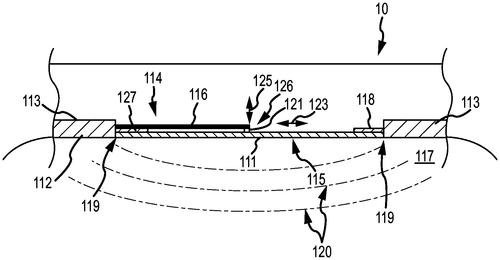
In a move that continues Apple's tradition of blending innovative technology with user experience, a recent patent describes a new type of tactile feedback for portable electronic devices. This invention utilizes a unique vibrating system embedded within the device’s housing, likely aimed at enhancing user engagement by allowing vibrations to be felt directly through the skin. Imagine a device that not only sends notifications silently but lets you feel them. With this technology, an Apple smartwatch or smartphone could vibrate gently, letting you know about incoming messages or reminders without any sounds. This concept could revolutionize how we interact with our technology, particularly in environments where sound is less than ideal, such as during meetings or while commuting. Competitors like Samsung and Fitbit already offer haptic feedback in their devices, but Apple's approach appears to deepen this experience, making the device's case itself part of the sensory interaction. This could open the door for a broader range of applications, from immersive gaming experiences to outlined notifications for the hearing impaired. While the possibilities seem intriguing, it’s essential to consider whether this technology will make it to market. Apple is known for its meticulous development process, and many patents never result in actual products. As we wait to see if this new tactile feedback system will grace the next generation of Apple devices, one can’t help but wonder—how important is the sensation of touch in your relationship with technology? Let us know your thoughts in the comments below!
Abstract
Examples of portable electronic devices including a piezo actuated vibrator for providing tactile feedback to the user are described. Portable electronic devices according to the present disclosure may include tactile feedback devices, which may be driven by a piezoelectric actuator/vibrator that is operatively coupled to or embedded into the housing of a portable electronic device. In some examples, the housing of the electronic device itself can be made of piezoelectric ceramic material. The piezoelectric element may be coupled to the housing of the product to cause the housing to deflect and/or vibrate. In some examples, the housing of the portable electronic device, which may be a portable media player device, may be configured for placement directly or indirectly in contact with the user's skin such that vibrations of the housing may be felt directly (without audible feedback) by the user. Examples of portable electronic devices including a piezo actuated vibrator for providing tactile feedback to the user are described. Portable electronic devices according to the present disclosure may include tactile feedback devices, which may be driven by a piezoelectric actuator/vibrator that is operatively coupled to or embedded into the housing of a portable electronic device. In some examples, the housing of the electronic device itself can be made of piezoelectric ceramic material. The piezoelectric element may be coupled to the housing of the product to cause the housing to deflect and/or vibrate. In some examples, the housing of the portable electronic device, which may be a portable media player device, may be configured for placement directly or indirectly in contact with the user's skin such that vibrations of the housing may be felt directly (without audible feedback) by the user.
US Patent 12064791
Apple Inc.
"Apple Unveils Smart Map Navigation: Seamlessly Combine Instructions and Mapping for Effortless Transit Journeys!"
What is this invention?
Transit navigation
There once was a map app so bright,
That guided us day and night.
With legs of transit to show,
Instructions in tow,
It made our routes perfect in sight!
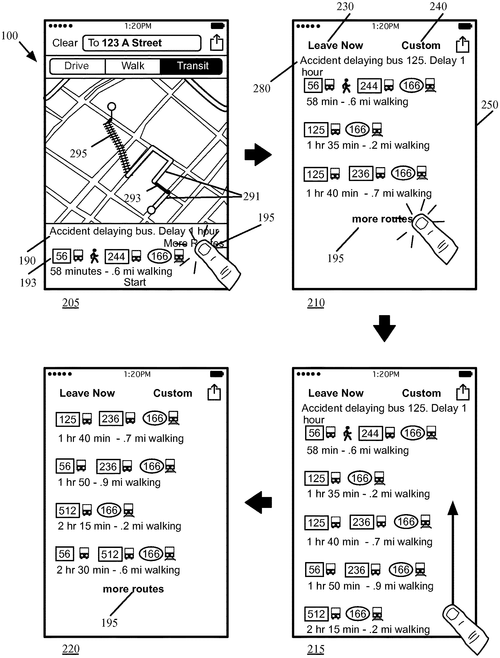
Apple Inc. is once again venturing into the realm of navigation with a new application that has caught the eye of tech enthusiasts. The proposed app aims to enhance the user experience of public transit by not only identifying routes but also providing detailed navigation instructions for each segment of the journey. It features two display areas: one for navigation instructions and another for visualizing the relevant map region. This dual-display approach could significantly ease the navigation process for commuters, allowing people to understand where they are headed with clarity. This new offering comes as transit apps have seen a surge in popularity, with competitors like Google Maps and Citymapper already dominating the market. These alternatives usually focus on directing users to their next stop with basic information and real-time updates. Apple’s potential entry with a more detailed and focused navigation aid could enhance user confidence, particularly for those in unfamiliar cities or for those who rely heavily on public transport. Imagine being able to pull up a specific route across town and receiving precise hacks on how to switch buses or catch a train all directly on your phone. This could be a game changer for urban planners, tourists unfamiliar with local transit systems, and daily commuters juggling tight schedules. Yet, there’s a question lingering amidst the excitement: will Apple’s navigation app be able to carve out a niche in a crowded marketplace, or will it simply blend into a sea of similar services? How might this shape the future of urban mobility? We’d love to hear your thoughts in the comments below.
Abstract
Some embodiments provide a map application that identities a transit route that includes one or more transit legs between a starting location and a destination location. In response to a request to start navigating the identified transit route, the map application of some embodiments provides a first display area for displaying a set of navigation instructions, each of which describes a transit maneuver that is associated with a transit leg of the transit route. The map application also provides a second display area for displaying a map region presentation associated with the navigation instruction that is displayed in the first display area. Some embodiments provide a map application that identities a transit route that includes one or more transit legs between a starting location and a destination location. In response to a request to start navigating the identified transit route, the map application of some embodiments provides a first display area for displaying a set of navigation instructions, each of which describes a transit maneuver that is associated with a transit leg of the transit route. The map application also provides a second display area for displaying a map region presentation associated with the navigation instruction that is displayed in the first display area.
US Patent 12066293
Apple Inc.
"Apple Patent Unveils Groundbreaking Altitude Estimation Technology for Enhanced Mobile Device Navigation"
What is this invention?
Location of interest altitude and determining calibration points
A mobile device learns to ascend,
With sensors that help it pretend.
It gauges the skies,
With pressure’s wise ties,
And altitudes shift as they blend.
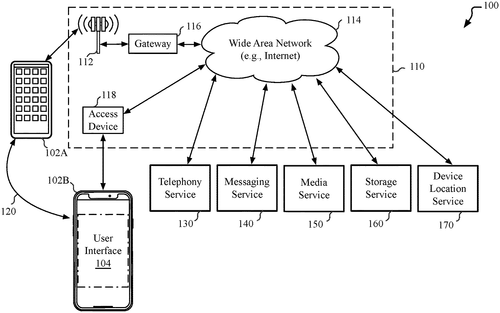
Apple recently filed a patent that hints at exciting advancements for mobile devices, specifically in their ability to estimate altitude with greater accuracy. Unlike current technologies that primarily rely on GPS systems—commonly used by devices like the Garmin Foretrex or even Google Maps for hikers and outdoor enthusiasts—this new approach involves utilizing a barometric pressure sensor. By first establishing a baseline altitude at ground level and continuously calibrating it with instant pressure changes, Apple’s potential innovation aims to allow devices to more accurately track how high or low a user is in relation to their starting point. The implications for such technology could be vast. Imagine a scenario where your iPh. one or Apple Watch becomes an essential tool for mountaineers attempting to conquer challenging terrains, offering more precise readings that could enhance safety protocols. Alternatively, urban planners may utilize this technology to assess building heights or even monitor air pressure variations in densely populated areas—providing real-time data that could aid in public safety efforts during severe weather. However, the feasibility of integrating such capabilities into existing devices remains to be seen. Competing products already boast altitude tracking, but they may fall short of Apple's proposed accuracy and usability. Will this be a game-changer for smartphone users and outdoor adventurers, or is it just another feature in the crowded tech market? What do you think—would you find value in a more precise altitude measurement on your mobile device, or is it a feature you wouldn't use? Share your thoughts below!
Abstract
Described herein are techniques to enable a mobile device to perform multi-source estimation of an altitude for a location. A baseline altitude may be determined at ground level for a location and used to calibrate a barometric pressure sensor on the mobile device. The calibrated barometric pressure sensor can then estimate changes in altitude relative to ground level based on detected pressure differentials, allowing a relative altitude to ground to be determined. Baseline calibration for the barometric sensor calibration can be performed to determine an ambient ground-level barometric pressure. Described herein are techniques to enable a mobile device to perform multi-source estimation of an altitude for a location. A baseline altitude may be determined at ground level for a location and used to calibrate a barometric pressure sensor on the mobile device. The calibrated barometric pressure sensor can then estimate changes in altitude relative to ground level based on detected pressure differentials, allowing a relative altitude to ground to be determined. Baseline calibration for the barometric sensor calibration can be performed to determine an ambient ground-level barometric pressure.
US Patent 12066344
Apple Inc.
"Apple's New Patent Promises Stunning Ultra-Wide Photography with 140° Field of View!"
What is this invention?
Lens system including five lenses of -+-+- refractive powers
In a camera with a notable flair,
A photosensor catches light in mid-air.
With lenses that bend,
And a wide-angle trend,
It captures the world with precision and care.
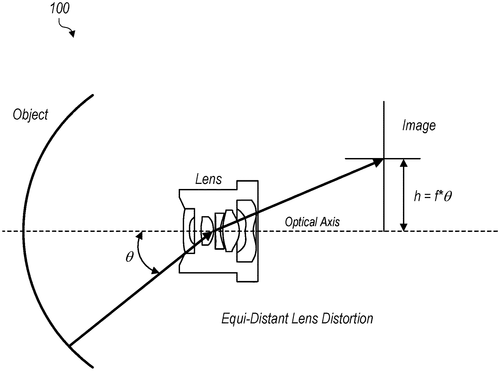
Apple's newest patent points to an exciting development in the realm of camera technology. With an expansive field of view spanning from 110 to 140 degrees, this potential new camera could rival products like GoPr. o's action cameras and even the latest offerings from DJI that are designed for both casual and professional users. What sets this proposed device apart is its advanced lens system, promising to capture images with impressive clarity, thanks in part to a specific light-gathering capability. This technology could have wide-ranging applications, from enhancing the experience of videographers capturing dynamic scenes to improving the capabilities of security cameras monitoring vast areas. Imagine the potential for immersive livestreaming or ultra-wide-angle photography without the usual distortion that comes along with such lenses. In a world where content creation is dominant, this could be a game changer. However, the question remains: will this innovation translate into an actual product that consumers can get their hands on? Apple's history has shown it can be selective in which technologies it chooses to bring to market, and the competition in the camera domain is fierce. As the tech landscape continues to evolve, will this ambitious camera design make it out of the lab and into the hands of eager users? Share your thoughts in the comments below!
Abstract
A camera includes a photosensor configured to capture light projected onto a surface of the photosensor and a lens system configured to refract light from an object field located in front of the camera to form an image of a scene at an image plane at or near the surface of the photosensor. The lens system comprises a plurality of refractive lens elements arranged along an optical axis of the camera. The lens system is configured to have a field-of-view (FOV) within a range of 110° to 140°, and the lens system has an F-number within a range of 2.2 to 2.8. A camera includes a photosensor configured to capture light projected onto a surface of the photosensor and a lens system configured to refract light from an object field located in front of the camera to form an image of a scene at an image plane at or near the surface of the photosensor. The lens system comprises a plurality of refractive lens elements arranged along an optical axis of the camera. The lens system is configured to have a field-of-view (FOV) within a range of 110° to 140°, and the lens system has an F-number within a range of 2.2 to 2.8.
US Patent 12066600
LG ELECTRONICS INC.
"Revolutionizing Indoor Gardening: LG's Innovative Plant Cultivation Apparatus Makes Cleaning Effortless!"
What is this invention?
Plant cultivation apparatus
In a room where the plants thrive and bloom,
A bed cover stays snug, clearing the gloom.
With parts that eject,
For ease and respect,
It washes with grace, making gardening boom!
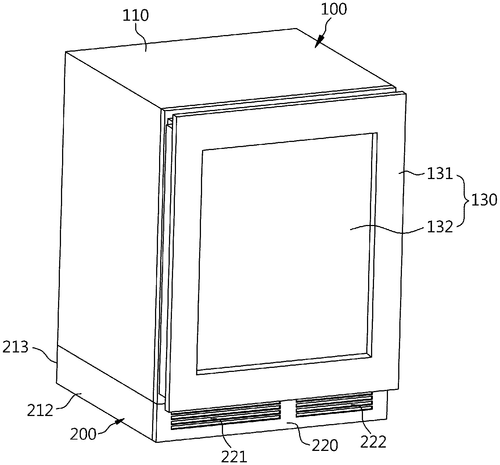
A newly filed patent from LG Electronics reveals an intriguing approach to indoor farming that could change the way we think about plant cultivation. The proposed system allows for a unique design where the growing bed remains securely in place during maintenance, while other components can be easily removed and cleaned. This innovative method promises to streamline the often tedious task of maintaining a sanitary environment for plant growth. As urban farming gains traction through brands like AeroGa. rden and Click & Grow, the LG system could carve out a niche by enhancing user convenience. Imagine a setup that enables hobbyists and city dwellers to grow fresh vegetables and herbs right in their kitchens with minimal hassle. The ability to clean the bed without disassembling the entire unit means less downtime and a greater yield for those looking to cultivate their own greens. However, while the implications are exciting, it remains to be seen whether LG will turn this concept into a practical product. Given the competition in the indoor gardening space, including existing smart gardens that automate watering and lighting, LG will need to demonstrate how this new system offers a distinct advantage. What do you think—would you be interested in using a plant cultivation apparatus like this, or do you prefer the current models on the market? Let us know in the comments below!
Abstract
A plant cultivation apparatus of the present disclosure is proposed. In the plant cultivation apparatus, a portion where a bed cover is seated is maintained in a state of being positioned in a cultivation room together with the bed cover. In addition, the present disclosure proposes that other portions excluding the portion where the bed cover is seated are configured to be ejected from the cultivation room as needed. Therefore, the bed is washed without separation of the pod. A plant cultivation apparatus of the present disclosure is proposed. In the plant cultivation apparatus, a portion where a bed cover is seated is maintained in a state of being positioned in a cultivation room together with the bed cover. In addition, the present disclosure proposes that other portions excluding the portion where the bed cover is seated are configured to be ejected from the cultivation room as needed. Therefore, the bed is washed without separation of the pod.
US Patent 12063901
LG ELECTRONICS INC.
"Revolutionizing Respiratory Comfort: LG's Smart Mask with Built-in Airflow Technology"
What is this invention?
Mask apparatus
In a mask that's both snug and quite bright,
An air duct takes charge of the flight.
With a fan blowing air,
Breathing's easy, I swear,
Comfort's found in this gadget, just right!
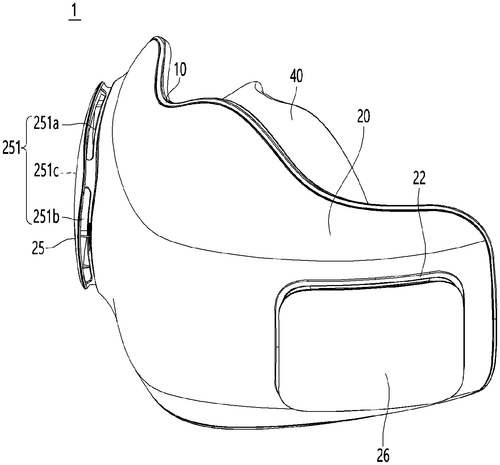
In an intriguing development from LG Electronics, the company has introduced a patent for a mask that combines classic design with innovative technology aimed at improving user comfort and functionality. This new mask features a forward-facing air duct and a built-in fan designed to pull in fresh air, making it an appealing option for those looking for relief during prolonged wear. The mask's design includes a cover that conceals the fan and duct while ensuring that users enjoy a firm yet comfortable seal against their faces. This is a thoughtful touch, especially as masks have often faced criticism for being restrictive and uncomfortable over extended use. The internal padding aims to further enhance comfort, setting it apart from more static offerings from competitors like Apple’s recent forays into health tech or more conventional surgical masks that have dominated the market. Imagine the potential applications of such a mask. It could serve as a game-changer for professionals in high-demand environments, such as healthcare workers or construction crews, where breathing easy and working efficiently are paramount. Additionally, casual users in crowded, urban settings could find a breath of fresh air—literally—during their daily commutes. However, the question remains: will LG bring this innovative design to market in a way that meets consumer needs, or will it be another exciting concept that never sees the light of day? What do you think—would you wear a high-tech mask like this, or does it miss the mark for you? Share your thoughts in the comments below!
Abstract
A mask apparatus includes a mask body including an air duct disposed at a front surface of the mask body, and a fan module mounting portion disposed at a suction-side of the air duct, a fan module disposed at the fan module mounting portion and configured to supply external air to the air duct, a mask body cover that is coupled to the front surface of the mask body and covers the fan module and the air duct, a seal coupled to a rear surface of the mask body and configured to contact a user's face and define a breathing space for the user, a sealing bracket that fixes a portion of the seal to the rear surface of the mask body, and a pad configured to be disposed inside the breathing space. A mask apparatus includes a mask body including an air duct disposed at a front surface of the mask body, and a fan module mounting portion disposed at a suction-side of the air duct, a fan module disposed at the fan module mounting portion and configured to supply external air to the air duct, a mask body cover that is coupled to the front surface of the mask body and covers the fan module and the air duct, a seal coupled to a rear surface of the mask body and configured to contact a user's face and define a breathing space for the user, a sealing bracket that fixes a portion of the seal to the rear surface of the mask body, and a pad configured to be disposed inside the breathing space.
US Patent 12063990
LG ELECTRONICS INC.
"LG's Innovative Blender Design Revolutionizes Convenience with Detachable Container and Ergonomic Handle!"
What is this invention?
Blender and blender container
There once was a clever machine,
With a motor and parts all quite keen.
A handle so grand,
Protrudes from the stand,
For blending, it’s fit for a queen!
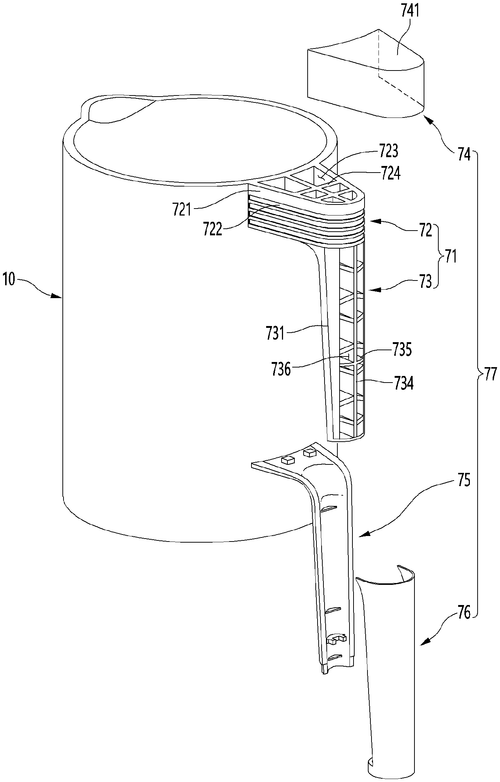
In an exciting new development from LG Electronics, a recently patented blender design is set to shake up the kitchen appliance market. With a focus on ergonomics and user-friendliness, this innovative blender features a detachable container that easily connects to a powerful motor assembly in the main body. What truly sets this blender apart is its unique handle, designed to be both comfortable to grip and practical for pouring. Unlike traditional blenders that can be cumbersome, this design aims to enhance ease of use, especially when transferring smoothies, sauces, or purees. Competitors such as Vitamix and Ninja have long dominated the blending sphere, offering robust machines with various capabilities. However, LG's approach appears to prioritize user ergonomics, which could resonate with home cooks looking for functionality without sacrificing convenience. This could also position LG as a formidable contender in the growing health-focused kitchenware sector, where ease of use often drives consumer choices. Imagine a busy parent whipping up a morning smoothie while juggling a toddler on one side and a phone on the other; or a fitness enthusiast who wants to prepare protein shakes easily before hitting the gym. With this new handle design, LG is betting that blending can become a seamless part of daily routines. As we look forward to seeing whether this patent transitions into a product that brings these innovative features to kitchen counters, it raises the question of how important ergonomics and user experience are in your kitchen appliance decisions. What features do you prioritize when choosing a blender? Share your thoughts below!
Abstract
A blender includes a main body provided with a motor assembly; a container detachably mountable to the main body and of which an upper surface is opened; a handle having an upper end which is connected to the container and a lower end which is spaced apart from the container, where the handle includes a handle body formed integrally with the container and protruding laterally from an upper end of the container and extending downward from the container. A blender includes a main body provided with a motor assembly; a container detachably mountable to the main body and of which an upper surface is opened; a handle having an upper end which is connected to the container and a lower end which is spaced apart from the container, where the handle includes a handle body formed integrally with the container and protruding laterally from an upper end of the container and extending downward from the container.
US Patent 12064057
LG ELECTRONICS INC.
"LG's Revolutionary Dishwasher Patent Promises Faster, More Efficient Drying with Advanced Temperature Control!"
What is this invention?
Dishwasher
A dishwasher, clever and bright,
Heats the wash space just right,
As the warm air ascends,
With efficiency it sends,
Making dishes all sparkle and light!
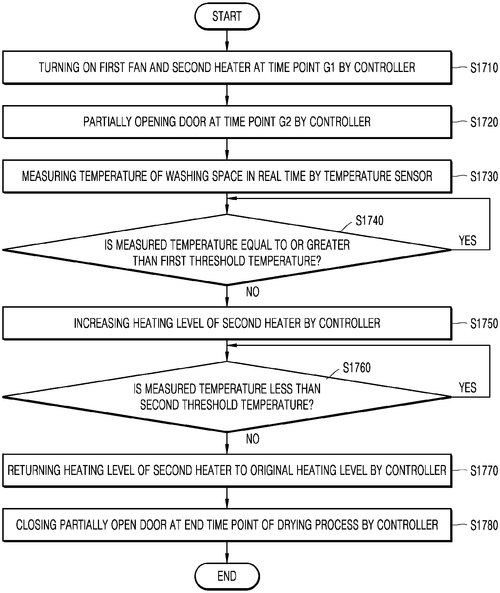
LG Electronics has recently filed a patent for a new dishwasher innovation that aims to revolutionize the drying process. This groundbreaking technology enhances the efficiency of drying dishes by ramping up the temperature in the washing compartment before expelling the air. The idea is simple yet clever: by keeping the interior warm, the dishwasher could potentially speed up drying times and leave your dishes spotlessly clean. Current competitors like Bosch and KitchenAi. d have long dominated the market with their advanced drying systems. However, LG's design hints at a notable upgrade—if it transitions from concept to reality. Faster drying cycles could not only save users time but also make a significant difference in households that heavily rely on their dishwashers. Imagine a busy family unloading freshly washed dishes from their efficient LG dishwasher just in time for a dinner party, without worrying about towel-drying or lingering moisture. Or consider the environmental impact—by reducing drying time, energy consumption could also be minimized. While the concept sounds promising, we await the real-world performance to measure its success against existing models. Is the future of dishwashing truly here, or does it require more development before LG can claim a stake in the drying efficiency game? What features do you think would make an ideal dishwasher even better? Share your thoughts in the comments!
Abstract
A dishwasher is disclosed. When the dishwasher performs a drying process, the dishwasher increases a temperature of a washing space before air inside the washing space is discharged, thereby maintaining the temperature of the washing space at an appropriate drying temperature and increasing efficiency of the drying process. A dishwasher is disclosed. When the dishwasher performs a drying process, the dishwasher increases a temperature of a washing space before air inside the washing space is discharged, thereby maintaining the temperature of the washing space at an appropriate drying temperature and increasing efficiency of the drying process.
US Patent 12064074